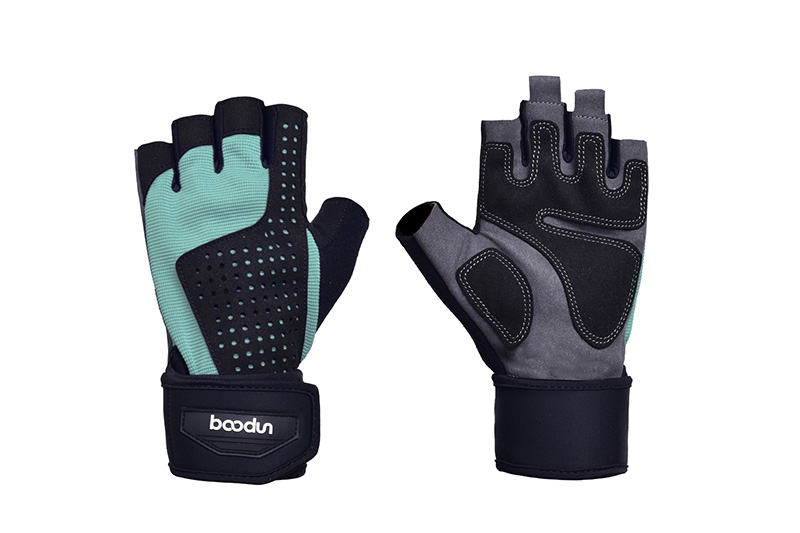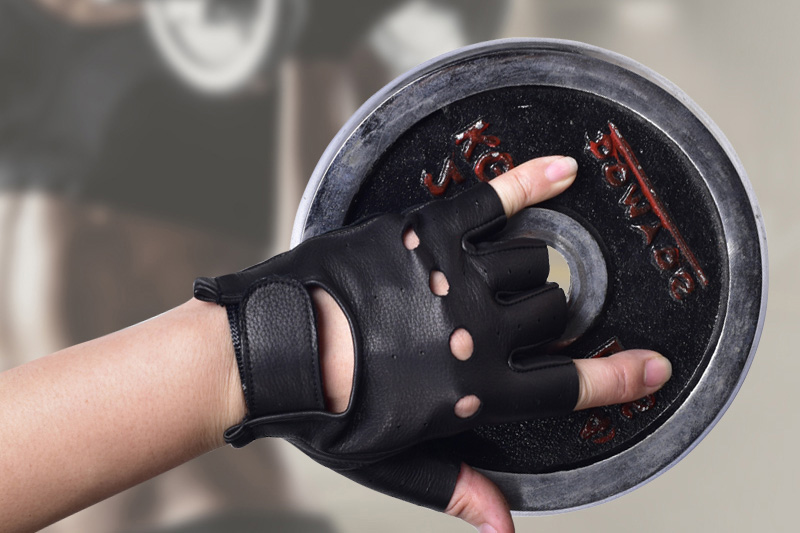
You need to wear gloves to protect your hands to complete many tasks, such as cleaning the yard, washing dishes, scrubbing the floor, car repairs, house painting and hair dyeing. Weight lifting requires extensive use of both hands when pushing and pulling down the weight plate, grabbing the barbell, moving dumbbells, or shaking the kettlebell. The pleasure of enjoying these activities is attenuated due to injury or irritation (such as abrasions). You can choose to wear weight lifting gloves to avoid calluses, but in addition to protecting your hands, weightlifting gloves also have many other advantages, and can even help you break through the exercise plateau. The right pair of gloves can be easily put into a gym bag, absorb sweat, slip easily, and provide odor protection. If you are evaluating whether you need weightlifting gloves, consider the following seven advantages:
Weight lifting gloves can protect fingers
Lifting heavy objects on hands of inexperienced people may put pressure on the tendons of the fingers. Normally, the middle finger bears the brunt. If the tendon is over-tensioned, you may develop symptoms of tendinitis. These include swelling, pain, inflammation, pain to touch or the inability to bend the fingers. Even minor injuries or pain can affect your progress. Wearing sports gloves can provide extra support for your hands and fingers. Gloves can provide a protective barrier instead of allowing heavy loads to come into full contact with the fingers. Although gloves cannot enable you to lift heavy objects, weightlifting gloves can protect your fingers from pressure and help you gradually increase the weight.
Weight lifting gloves can reduce calluses
Calluses are small rough spots that accumulate due to friction. When the handle of the weightlifting bar repeatedly rubs your palm, it will produce blisters and even calluses. Although the calluses are not dangerous, if you continue to exercise without protecting your hands, the calluses may become painful, cracked or split. These injuries may delay your fitness progress because you will not be able to use the appropriate form when lifting weights. Weightlifting gloves prevent the formation of calluses by providing a layer of protection between your hand and the rough fitness bar. You don’t have to spend hours taking care of the calluses, and you don’t have to waste energy worrying about tearing them apart. Instead, you can focus your energy on exercise.
Gloves eliminate the need for magnesium powder
Fitness participants can use magnesium powder to enhance their grip and reduce sweat. However, due to the difficulty of cleaning, many stadiums discourage or prohibit the use of sports powder. In addition, some people are sensitive to dust inhalation and may sneeze or cough when exposed to dust. If you used powder to perform actions such as deadlifts, but your gym has changed its policy or you are experiencing an allergic reaction, please wear a pair of gloves instead. Weight lifting gloves eliminate the need for powder by absorbing sweat and enhancing grip. In addition, unlike powder, gloves are not messy, so you don't have to clean the floor after use.
Weight lifting gloves can reduce the risk of fitness equipment falling
If you are exercising nervously, you are sweating. This is inevitable. Sweating is how the body regulates its internal temperature. Some people sweat on their hands or may wipe sweat from their forehead or face with their hands. When your hands get wet, the chance of a barbell or dumbbell slipping increases. Depending on the exercise, it may hit your feet, legs, chest or head. Contact in any of these areas can cause mild to severe injuries. Wearing weightlifting gloves can reduce the chance of danger, especially if materials such as neoprene absorb sweat. It is safer to exercise. Wear protective gloves to reduce the risk of equipment falling and self-injury. Choose gloves that do not increase sweating. For example, one-handed leather gloves may increase sweating, which can make you uncomfortable and smelly. Small gloves covering the palms and finger pads can make air flow, absorb excess sweat and hold the training tool firmly.
Exercise gloves to increase stability
Weightlifting gloves can provide stability to your hands, and some types can even add safety to your wrists. If you have injured your finger, hand or wrist before, you may need this extra protection. Even if there is no injury, the gloves provide solid support for your lifting movement. Gloves add a thin and stable platform to your hands, thereby increasing the stability of your grip and helping you hold heavy objects for a long time. This leads to increased strength, increased muscle endurance and increased grip. If you pair the gloves with the wrist strap, your forearms will also be stable to help you control your weight lifting and maintain the correct technique.
Gloves provide cushions, which can relieve hand pain.
Hand pain may come on suddenly or after years of lifting weights. You may also be dealing with chronic physical illnesses that affect your nerves. If the nerves are too sensitive or overused, hand pain can prevent healthy and vigorous exercise. Weightlifting gloves provide cushioning to relieve this neuralgia and allow you to continue exercising. Choose weightlifting gloves suitable for various sports. For example, small pads that can slide on your fingers provide a convenient platform for push-ups, provide a non-slip grip for pulling up the barbell, and provide protection for your hands when the barbell arms are curled. The best option is thin gloves, which will not change your grip. In other words, if you choose thick, bulky gloves to add half an inch of protection, the shape of the grip will change. In contrast, a thin pad that protects the contact area does not add bulk or change the way you grip the barbell.
